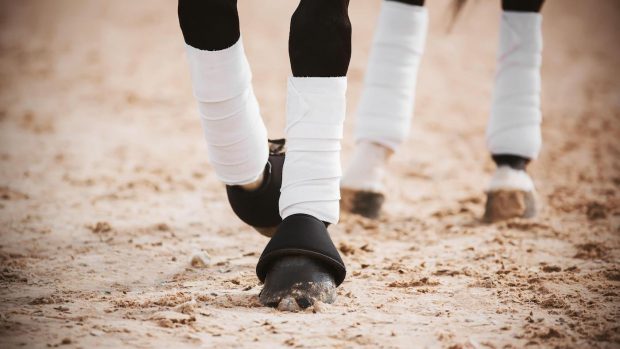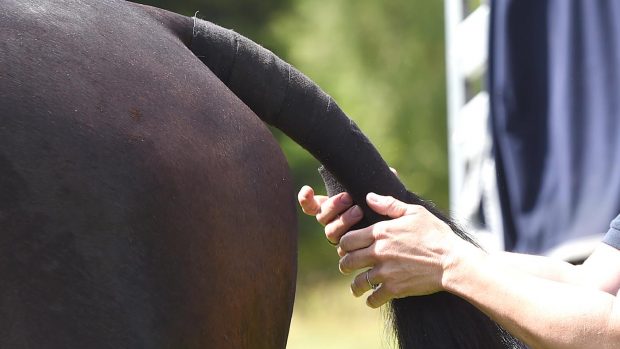Q: I’m confused about how to fit exercise and stable bandages. I know it’s dangerous for them to be too tight, but I don’t want them to slip down. Also, could you explain how to fit tendon boots?
Stephanie Soskin(BHSInt) replies: Whether you are using stable or exercise bandages it is essential they are fitted correctly.
Stable bandages can be made from wool or man-made fibre. They should be 4-5ins wide and about 7ft long. They are usually put on top of fybagee or Gamgee (from Robinson Animal Healthcare on (tel: 01246 220 022), unless the bandages are designed to go on the leg without extra padding.
Most often used for warmth, promoting circulation and to offer extra support for tired or injured legs, stable bandages are also helpful for drying off wet legs and keeping surgical dressings in place.
To put any bandage on properly it must be wrapped up firmly and you should make sure the tapes are rolled inside the right way. The bandage should then be put on the horse’s leg firmly, with even tension.
There shouldn’t be any lumps or bumps and if tapes are being used to secure the bandage, make sure they are tied with the same tension as the bandage. Keep them flat, tie a bow on the outside and tuck in the ends.
The finished stable bandage should fit from just below the knee or hock to the coronet band, with the fybagee showing half an inch at the top and bottom.
Exercise bandages
Exercise bandages are used to protect against bruising and brushing injuries when working.
They can also offer support. Made from stretch material, such as elastic or crepe, they should be at least three inches wide and six feet long. Gamgee, fybagee or Porter boots should be positioned underneath the bandages.
Exercise bandages can be tighter thanstable bandages as they are elastic and not worn for long periods, but do make sure the tension is even.
The bandages should be fitted from just below the knee or hock to just above the fetlock joint.
Exercise bandages are normally secured with tapes. Tie the tapes in a bow on the outside of the leg and tuck the ends in. For safety, especially if you are going across country, the tapes should be sewn or bound with insulation tape.
Some bandages have broad tapes with a clip and Velcro, which are fine for flatwork, but need further securing for cross-country. Wet or muddy bandages can be heavy and shrink so they shouldn’t be worn for long rides or hunting.
To answer your other question, tendon boots look like brushing boots but offer extra protection down the back of the leg to prevent the tendon from being struck by the hind legs.
They should sit snugly into the leg between the knee and the fetlock joint. Open-fronted tendon boots are often used in showjumping.
They offer protection at the back but leave the front of the cannon bone exposed. Like other boots they should be fastened on the outside of the leg and the straps should point to the back.



